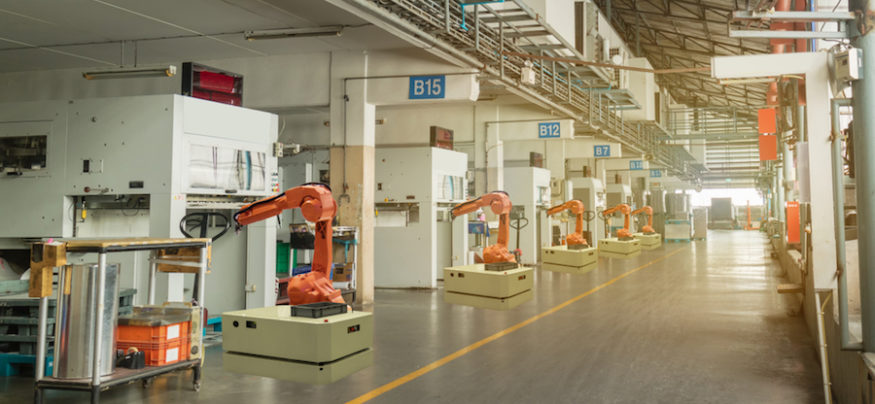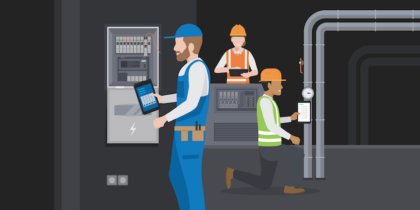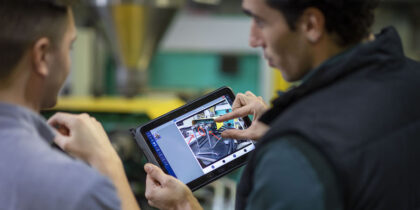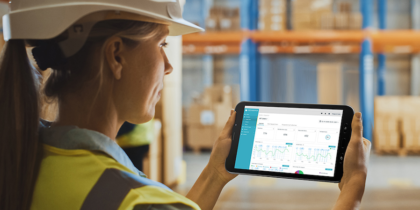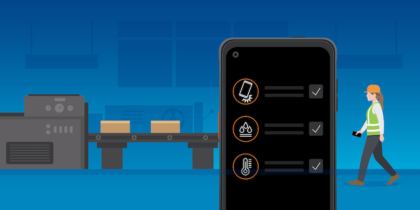In traditional manufacturing, machine availability rates on the production floor were fine-tuned by preventive maintenance (PM). The suppliers and vendors would prescribe a fixed service schedule for entire fleets of assets, and parts would be replaced accordingly, whether they needed to be or not.
Predictive maintenance (PdM), on the other hand, is predicated on the premise that machine floor assets should be monitored periodically and proactively repaired based on those inferences. While PdM is one step better than its preventive counterpart, the processes for both, which involve human labor and factory downtime, are expensive and can significantly undercut a company’s bottom line.
In today’s smart factory, however, PdM goes one step further: Data generated by shop floor assets are continuously monitored and sifted through machine learning models, which can then closely predict what’s coming down the belt. In essence, today’s lean manufacturing runs on a new brand of predictive maintenance which takes past asset performance data and predicts what the future will bring. Such valuable intelligence helps manufacturing companies schedule labor only when needed and maximizes asset availability.
The PdM models for today’s manufacturing technology depend on the ubiquity of Industrial Internet of Things (IIoT) to continuously monitor data, and mobile edge computing devices such as the Samsung Galaxy Tab Active2 or Samsung Galaxy Note9 to process all the data with low latency attributable to teh devices’ excellent networking capacities. Both devices can use industry-specific software such as IBM Maximo Anywhere to analyze that data and provide recommendations to plant managers and inspectors on the floor in real time.
Why Predictive Maintenance
Because maintenance of manufacturing assets requires downtime, predictive maintenance helps by scheduling maintenance only when it is actually needed. PdM is optimized to each asset — in other words, don’t let it run till it fails, but still, squeeze as much performance out of it as possible. Such an approach saves labor costs and increases operating system efficiency.
Nevertheless, continuous monitoring of assets can also be labor intensive. In traditional manufacturing floors, equipment is monitored manually and the data gathered is also manually inputted into analytic systems. Too often the same employees who are familiar with a piece of equipment are leaned on to inform about the machine’s health. Such tribal knowledge might be helpful, but it introduces an element of unreliability.
Modernize Your Factory With Mobile
Get your free guide to the mobile technologies that will accelerate your smart factory journey. Download Now
In the smart factory, PdM dramatically reduces the cost of manual monitoring, while providing sophisticated models to predict asset failure. Manufacturers can then act on these predictions to minimize disruptions to the production floor.
How Today’s PdM Works
Predictive maintenance in the age of the smart factory is based on machine learning models. Each shop floor asset has a set of variables — such as temperature, pressure and humidity — that can be monitored to determine its health. Fault detection, for example, is one of the key features of PdM. Measuring the number a rotor’s vibrations can help predict when a crack (or fault) will appear that could ultimately lead to failure.
Over time, companies build detailed manufacturing logs of such data. This data forms the basis for machine learning models for each piece of equipment. Machine learning models essentially use data from the past to predict the future, and then learn from the present to fine-tune their own predictions.
Once the machine learning model is in place, production managers must also decide what the threshold for action should be. For example, if the vibration exceeds a certain frequency, the machine sends out a text alert.
Relying on the Right Tech
As part of predictive maintenance, data from the IIoT sensors on equipment are continuously gathered, and the inference is carried out on the shop floor using a mobile computing device such as the Galaxy Note9.
Among the many advantages of using such a device: the strong computing power, which is greater than most PCs. Traditionally, all data generated by IIoT devices would be sent on to the cloud for analysis, but today, because of super powerful mobile devices like the Note9, most analyses can be done in real-time on the floor, thereby decreasing latency in the process. The Note9 also provides the S Pen stylus, which supports precision note-taking, even if the user is wearing protective gloves. Its security features also play well in production, because the device can verify users by iris scan or face recognition while they keep their gloves on.
The Note9 also provides the DeX mode option, which provides a full desktop experience without the expected limitations of a small mobile device. A manager can use the Note9 in standard phone mode on the production floor, then return to their desk and attach the phone to a monitor, keyboard and mouse and work with the same device as though they were on a desktop computer.
An additional advantage of the Galaxy Note9 is its ability to play well with others. Specific to today’s manufacturing technology, the device can run IBM Maximo Anywhere, an asset management app that can analyze the data from the machine learning model and make predictive analytics calls on when assets might fail.
For harsh productions environments, manufacturers can use the Galaxy Tab Active2, which meets military ruggedness standards for resistance to extreme temperatures, hard drops, immersion and dust. This rugged tablet also supports IBM Maximo Anywhere and can be operated with gloves on.
Lean manufacturing technology and the smart factory have heralded a rethink in how predictive maintenance is done. The special confluence of IIoT data and fast processing by devices such as the Galaxy Note9 mean we are poised to usher in a new age in how production floor assets are serviced and deployed.
Discover how to differentiate your manufacturing company with a customer-centric digital transformation in this white paper.
